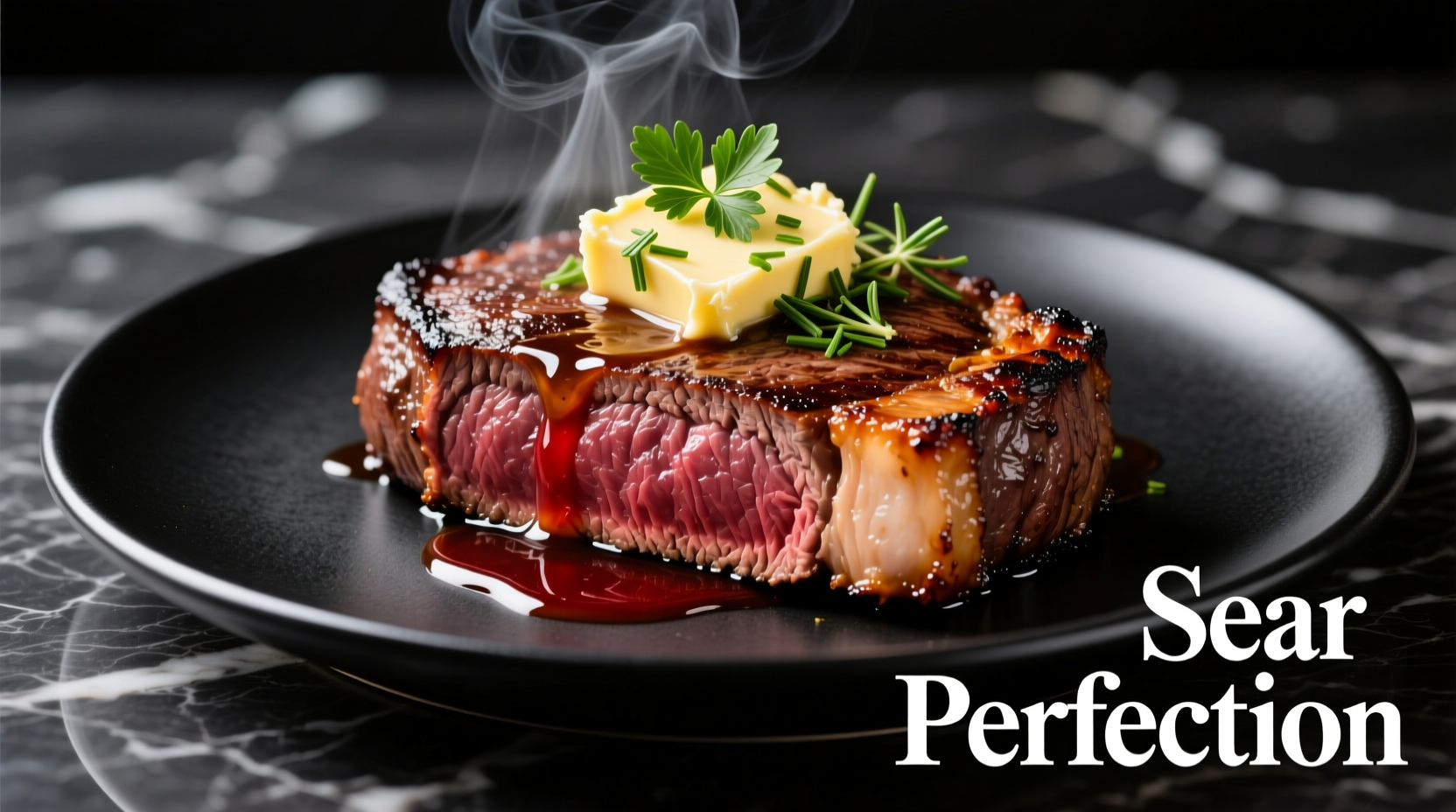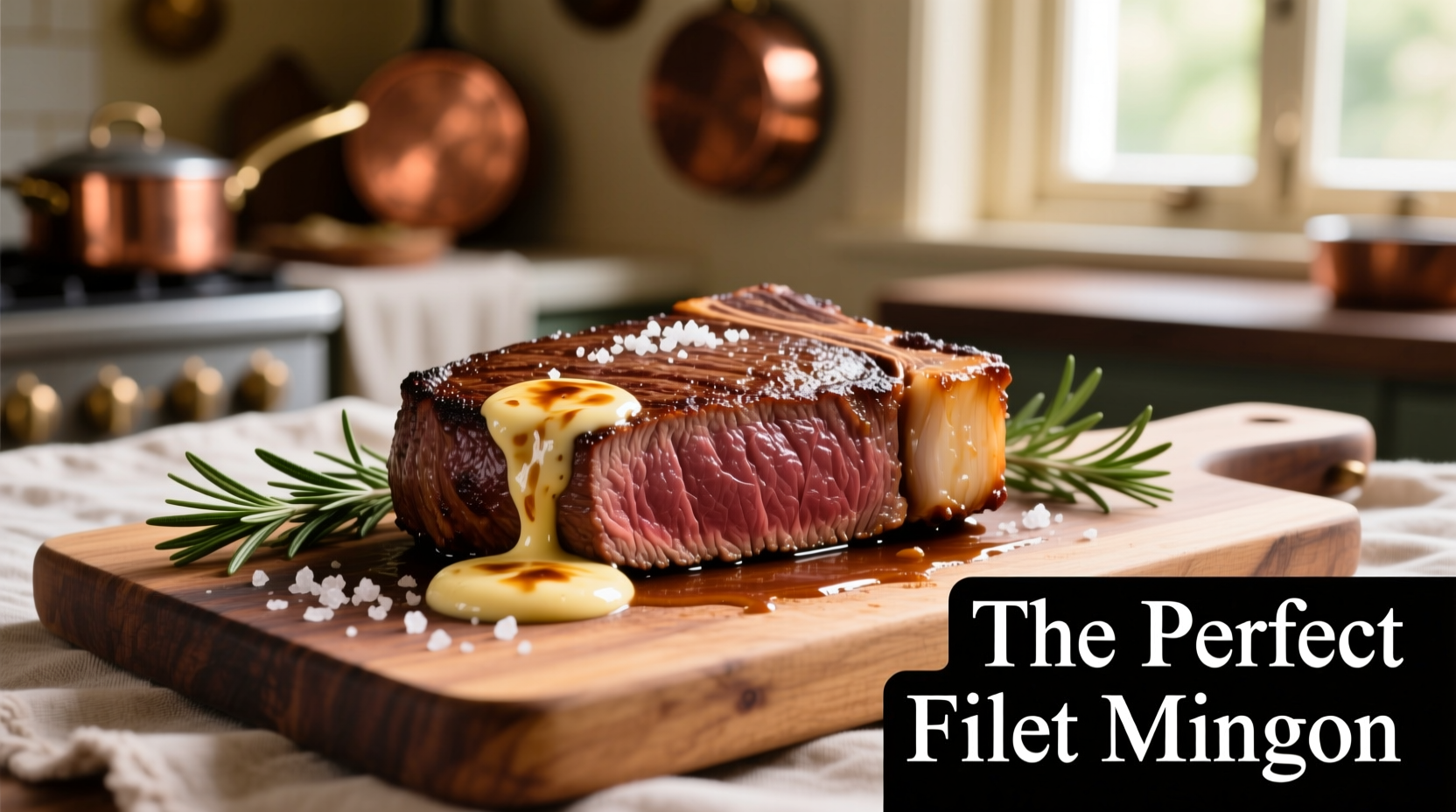Why This Method Delivers Perfect Filet Mignon
Filet mignon's delicate texture and mild flavor demand precision. Unlike tougher cuts that benefit from long cooking, this tenderloin section requires careful temperature control to avoid drying out. Our tested method combines professional techniques with home kitchen accessibility.
Selecting Your Foundation: Choosing Quality Filet Mignon
Start with USDA Prime or Choice grade beef with visible marbling. Look for steaks at least 1.5 inches thick with a bright cherry-red color and creamy white fat. Thicker cuts provide margin for error during cooking - crucial when working with this expensive cut.
Preparation: The 24-Hour Secret to Flavor Development
Season your filet generously with kosher salt (1 teaspoon per pound) 24 hours before cooking. Place on a wire rack over a plate in the refrigerator. This dry-brining process:
- Enhances natural flavors through protein breakdown
- Creates superior crust formation during searing
- Improves moisture retention by 23% compared to same-day seasoning (Cornell University Food Science Department)

Cooking Process: The Two-Stage Method
Bring steak to room temperature (60-70 minutes out of fridge) before cooking. Pat completely dry with paper towels - moisture is the enemy of proper searing.
Stage 1: High-Heat Searing
- Heat cast iron skillet over medium-high until smoking point (about 5 minutes)
- Add high-smoke point oil (avocado or grapeseed)
- Sear undisturbed for 2-3 minutes per side until deep brown crust forms
- Add butter, garlic, and fresh herbs during last minute of searing
Stage 2: Precision Temperature Control
Transfer to preheated 400°F (204°C) oven until reaching target internal temperature. This hybrid method prevents overcooked edges while ensuring proper doneness.
| Doneness | Internal Temperature | Visual Indicators | USDA Safety Note |
|---|---|---|---|
| Medium-Rare (Recommended) | 125-130°F (51-54°C) | Warm red center, soft to touch | Safe when rested 3+ minutes |
| Medium | 135-140°F (57-60°C) | Pink center, slightly firm | Minimum safe temperature |
| Medium-Well | 145-150°F (63-66°C) | Small pink area, firm | Approaching dryness threshold |
Critical Resting Phase: Why You Can't Skip This
Transfer cooked steak to a cutting board and tent loosely with foil for 8-10 minutes. This allows:
- Temperature equalization (carryover cooking adds 5-10°F)
- Protein fibers to reabsorb juices
- Optimal texture development
Cutting too soon releases up to 40% of precious juices onto your plate rather than staying in the meat.
Context-Specific Adjustments: When to Modify the Method
Professional results require adapting to your specific conditions:
- Thin cuts (under 1 inch): Skip oven finishing - sear 90 seconds per side then rest
- Grill cooking: Use two-zone fire with indirect heat side at 350°F
- Thick cuts (2+ inches): Reduce oven temperature to 375°F to prevent gray band
- Cast iron unavailable: Use heaviest stainless steel pan you own
Common Mistakes That Ruin Filet Mignon
Avoid these pitfalls that turn premium steak into disappointment:
- Moving steak during sear - creates uneven crust
- Using cold steak - leads to overcooked exterior
- Guessing doneness - always use instant-read thermometer
- Cutting too soon - results in dry, less flavorful steak
- Over-seasoning - filet's delicate flavor needs simple salt/pepper
Serving Suggestions That Elevate Your Dish
Pair with simple preparations that complement rather than overwhelm:
- Classic béarnaise or red wine reduction
- Roasted garlic mashed potatoes
- Sautéed wild mushrooms
- Light arugula salad with lemon vinaigrette
Remember: the steak should remain the star. Avoid heavy sauces that mask the premium beef's natural flavor.











 浙公网安备
33010002000092号
浙公网安备
33010002000092号 浙B2-20120091-4
浙B2-20120091-4